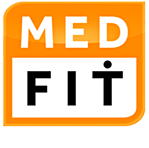Fine tune your fitness programs for ACO networks
The first quarter of 2014 is nearly over (and hopefully that is true of our winter!), so it’s a great time to assess if your strategies are on track to make your fitness or wellness business better this year. Fine-tuning your programs and communications tactics can better position your club as a part of the new healthcare delivery model. Although it is unclear how physicians and hospitals receiving bundled payments may pay for prevention and wellness services, it is clear that they will need to focus more attention on an individual’s complete health. Let’s start with who is actually in your club and how you can leverage these relationships strategically.
1. Connectors, Mavens and Salesmen
Malcolm Gladwell shares case studies on “How Little Things Can Make a Big Difference†in his 2000 book, The Tipping Point. We assigned this book to a group of fitness center managers, and asked them to formulate their own tipping points related to primary goals for their center’s business.
We especially wanted to increase awareness of chronic disease issues in the community, as we had purchased a series of ACSM exercise protocols that we believed create a key competitive advantage. But first we needed the team’s help in identifying connectors, mavens and salesmen among the membership to help spread our message–to create our own tipping point. Having your staff formulate a plan to identify such customers for key message delivery is an effective group exercise that can energize your current plan or be part of your planning process next year.
Our primary goal was to identify the Mavens, whom Gladwell describes as the “information specialists, or people we rely upon to connect us with new information.†These prime referrers want to solve other people’s problems. While probably not motivated by actual referral rewards, this group still needs nurturing. Our goal was to identify this type from members who had responded to a Loyalty Survey or who had been recognized in Leader Circle groups (based on weekly attendance). Ultimately, we wanted to discover and promote their personal improvement stories, and to develop talking points and incentives to spur them on to more referrals.
The other key groups in the Tipping Point concept are connectors and salesmen. Connectors typically make introductions in social circles because they have so many contacts in their network. Perhaps this valuable group is already active on your Facebook page. As you already know, salespeople are persuasive and charismatic, and you have them on staff.
You need all three groups working in concert to position your club for health care. But you also need “the stickiness factor,†as coined by Gladwell. That factor is the message. We’ll describe more on key consumer segments and specific messages in a later article.
2. Strategic Visioning
Change is rapidly occurring in the $2.7 trillion health care industry–especially in delivery. How will you be part of that change? When did you last take time to dream about your business, to dream with your key managers? Ask your core team members to explore their high point in working for your club, a time when they were operating at peak performance. Have them tell the story and describe the most important and helpful factors in the organization and the results. What can you learn from each other’s experience in how change occurs? Capture these details as you prepare for other changes that will be occurring in our industry. Start by asking what was it about the organization or team members that made a positive experience possible? What were the best qualities, skills or values that made it a high point? Write them down.
3. Asking Better Questions
Are you asking the right questions of your employees, your customers and yourself? The answers we get are often determined by the questions we ask. If we ask irrelevant questions, we get irrelevant answers. If we ask better questions—empowering questions—we get empowering answers. Marilee Adams, an executive coach, has developed a system of tools called Question Thinking that she outlines in her book Change Your Questions, Change Your Life. In a future article we will use these tools to dive into new member orientations and health and fitness assessments. Get started with your team with these questions: What could or should our competitive strategic advantage be? What do we have the ability to create right now? In mid-term? In the long-term?
4. Living the Vision
How has your business vision changed? In an annual all-staff meeting years ago, we used the FISH! Philosophy video, which describes how Pike’s Place Fish Market in Seattle became world-famous. I still relate to its simple idea of coming together as a team to live the vision. Successful teams are guided by three principles:
Be it: make the vision part of everything you do
Commit: make a commitment to bringing the vision into your place of work
Coach it: teach others about the importance of the vision, and have fun in doing it
Are you modeling a culture of wellness and fitness among your employees? If not, how do they feel about delivering health and wellness to your customers, other clients and possibly mavens in your community? An upcoming article will explore corporate wellness programs and their role in the new healthcare landscape.
5. Leaders Lead
Leaders focus on people and ask what and why. They develop and innovate. Are you ready to lead this next innovation? It’s going to require a longer-term perspective and resources to create change in your club and its position within the community. We’ll give you tips on how to get there.
Watch for our series for the Club Insider and excerpted here, Fitness Futures and Healthcare Delivery. We’ll cover:
Developing Healthcare Referrals: Sedentary, deconditioned and overweight. You can reach this market more effectively with lifestyle programs that can expand your ancillary revenues. But first you need to use the right message to get referrals from healthcare professionals in your market.
Your Club, Your Community: The healthcare environment is changing, and your role as a top fitness provider is a community asset. Have you identified community initiatives that can help you showcase your facility to residents and the health care community?
Going Corporate: Are you modeling a culture of wellness among your own employees? One of the best ways to develop a corporate wellness program is to practice what you preach.
Sticky Messages for Segments: Understanding who your customers are is one of the ways you’ve been successful in your business. Do you know what other customers you can reach in your market area? We do. With our Prizm analysis model for medical fitness center consumers, we’ve identified 10 top segments you can reach with lifestyle programs and targeted communications.
Measure and Evaluate. Assessing your programs is yet another way to communicate your results to your customers and potential customers. Plus, it makes smart business sense for those healthcare constituents you want to entice.
Use these ideas to start brainstorming on changes occurring in our industry. We welcome your thoughts and feedback. Sign up on our web site to get a list of analytical questions to help maximize your strategic competitive advantage.

